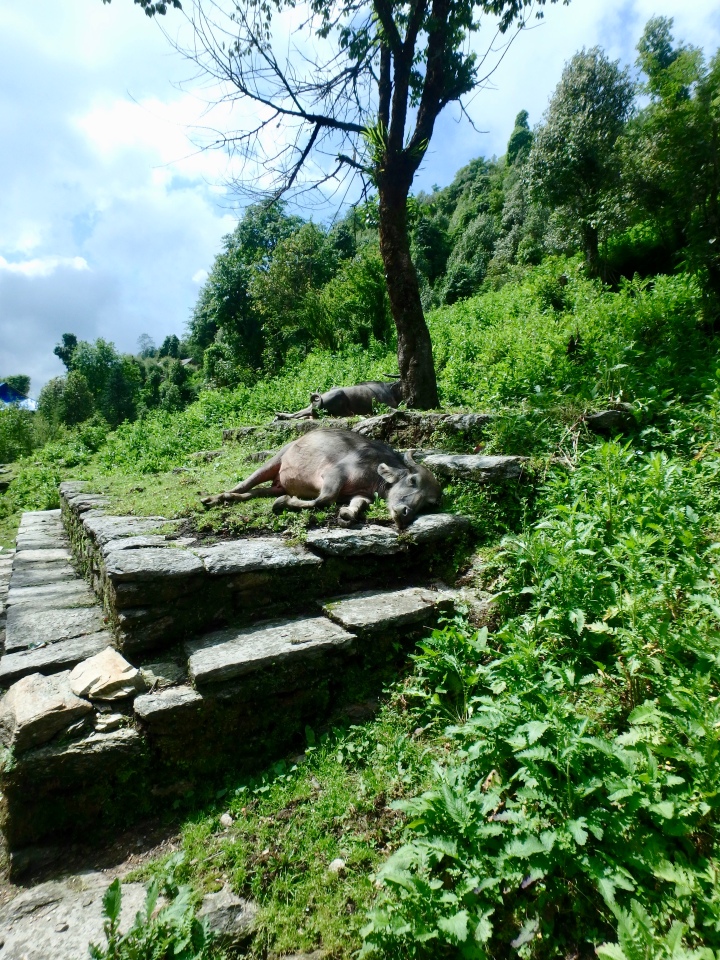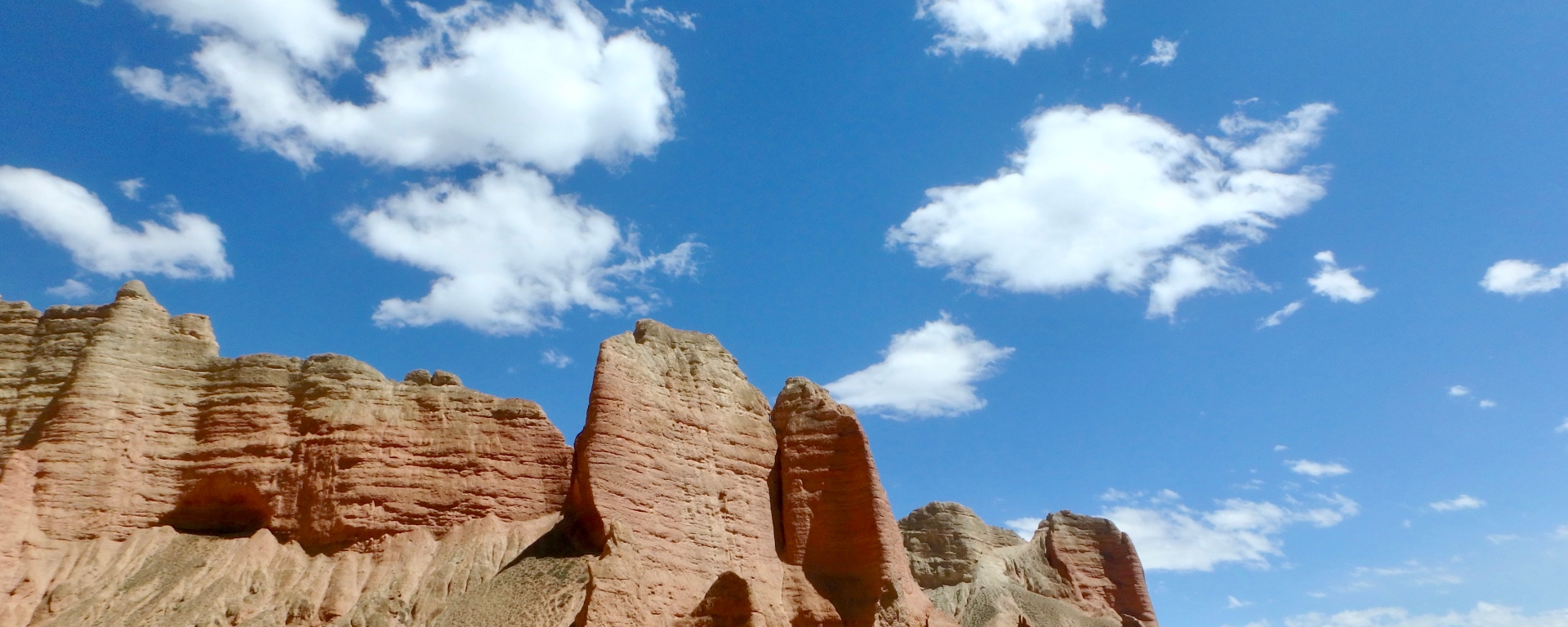A major part of Upper Mustang, Nepal is the journey there and back. We took a jeep up, passing people walking along the road who were trying and failing to shield themselves from the clouds of dust that covered them from each passing vehicle. Luckily for us, when we later walked down this same road ourselves, we were fortunate not to get as dusty, even though there were still gale-force winds. The road is nothing more than a thin, winding dirt track scratched into the side of the hills it climbs around and over. Our attempts to play games failed as no one could concentrate on anything other than what the driver was doing. I’ll be honest, I even sweated at times and was relieved when we left the hills with the hair-pin turns taken at speed while there was on-coming traffic and at times unaware bulldozers working above the road. On multiple occasions I thought how this, taking a vehicle, is probably the most dangerous thing I’ve done in Nepal.

Tim and Yadab walked down from Saribung Pass to join us and we all met and stayed a few days at the main settlement of Upper Mustang, Lo Manthang, to rest and use the ancient walled village as a base to explore the area.
If I had to describe Upper Mustang in one word it would be, barren. The landscape is a vast ocean of rocks in various shapes and shades of pale warm colours that at the horizon, rise up to rock hills and rock mountains. Leaving these surroundings to pass through the walls into Lo Manthang shows you what can be made from rocks and dust. There are twisting, identical alleyways where weathered and broken doors guard people’s homes and around each corner you are surprised when you occasionally stumble upon a monastery or an open plaza with shops all around. Back out in the open, smaller villages and monasteries cluster around pockets of oasis. On the way, we had to cross a number of ‘Indiana Jones’-style bridges. The type that look like there’s no way they can support your weight and that you should quickly run across.
One day we went to these amazing caves near Chhosar where an ancient Nepalese tribe safely hid from a warring group from what is now Tibet*. You can still move around over a few levels and explore numerous rooms and hallways. We also learnt the story of the woman from this village who put oil in her hair and walked past some ‘windows’ so that the enemy wrongly thought these people had access to water and therefore withdrew their siege. The village of Dhakmar was another highlight of the area. Surrounding this tiny place are some of the most incredible cliffs and rock formations in the most incredible shades of red. It reminded me of Cappadocia in Turkey and I couldn’t help but be blown away with the realisation of all the natural wonders contained in this one country. It made me so happy to think about how I had made the physical effort to get to this place and how I was being royally rewarded by this feast for the eyes that so many have not seen.
After walking back down the valley, we all stopped at Kagbeni which was where Tim and I parted ways for the last time during his trek. As he and his team headed West for the last month, I continued along the Annapurna circuit with my Mother-in-Law Nona for my final five days trekking. Our second day involved a five-hour bus journey to Tatopani which in Nepali means ‘hot water’. We made the decision to bus, like many others, to avoid walking along a dusty road with traffic and both commented on another huge change in scenery. In that short period of time we went from the barren, dry and rocky landscape to lush tropical forest…. and hot pools. Tatopani’s two large and clean hot pools are filled with the most relaxing natural hot water. It was great and just what my body wanted.

The next few days brought with them a few lessons. A wrong turn leaving Tatopani reminded me it’s better to stop, take some time and double check your route at any intersection if there is even a slither of uncertainty. We unwittingly walked in the wrong direction for close to an hour when the uncertainty grew and checking my rough map I realised where we had gone wrong. Hailing down a truck then meant we at least did not have to re-trace all of our steps. Ops. The next lesson was one of weather. The monsoon season had well and truly arrived by this time and each day except one came with a downpour lasting anywhere from one to four hours. After one downpour hit during lunch, we changed our trekking schedule to try and avoid getting soaked or needing to spend hours in a basic café shelter waiting it out. We were mostly successful. The times we weren’t were OK too. Lying on your lodge bed at the end of walking, with your wet clothes on the floor, laughing and scooping peanut butter out of the jar makes it all OK.

Before I knew it, 35 days had passed and we had finished the last of the trek arriving in the bustling lakeside town of Pokhara. My time trekking in Nepal was complete and Pokhara signalled the start of a new phase to my travels here. We had encountered so many different places, people and events on this trek and I think that was instrumental in balancing with the repetition each day had whilst we were walking. Turns out, I actually didn’t need to be too nervous about completing a 35-day trek after all.
*Sorry, the Tibetan Independent Region of the People’s Democratic Republic of China.
NOTE: For anyone reading who is interested in more technical climbing, or crazy big adventures. If you are curious about Saribung Pass, or any of Tim’s Great Himalaya Trail trek, you can see more and contact him through the Facebook page ‘Great Himalaya Trail 2017’.
PLEASE USE THE LINKS BELOW TO READ THE OTHER POSTS IN THIS SERIES











2 thoughts on “Approaching Nepal’s Wild West (Part 3 of 3)”